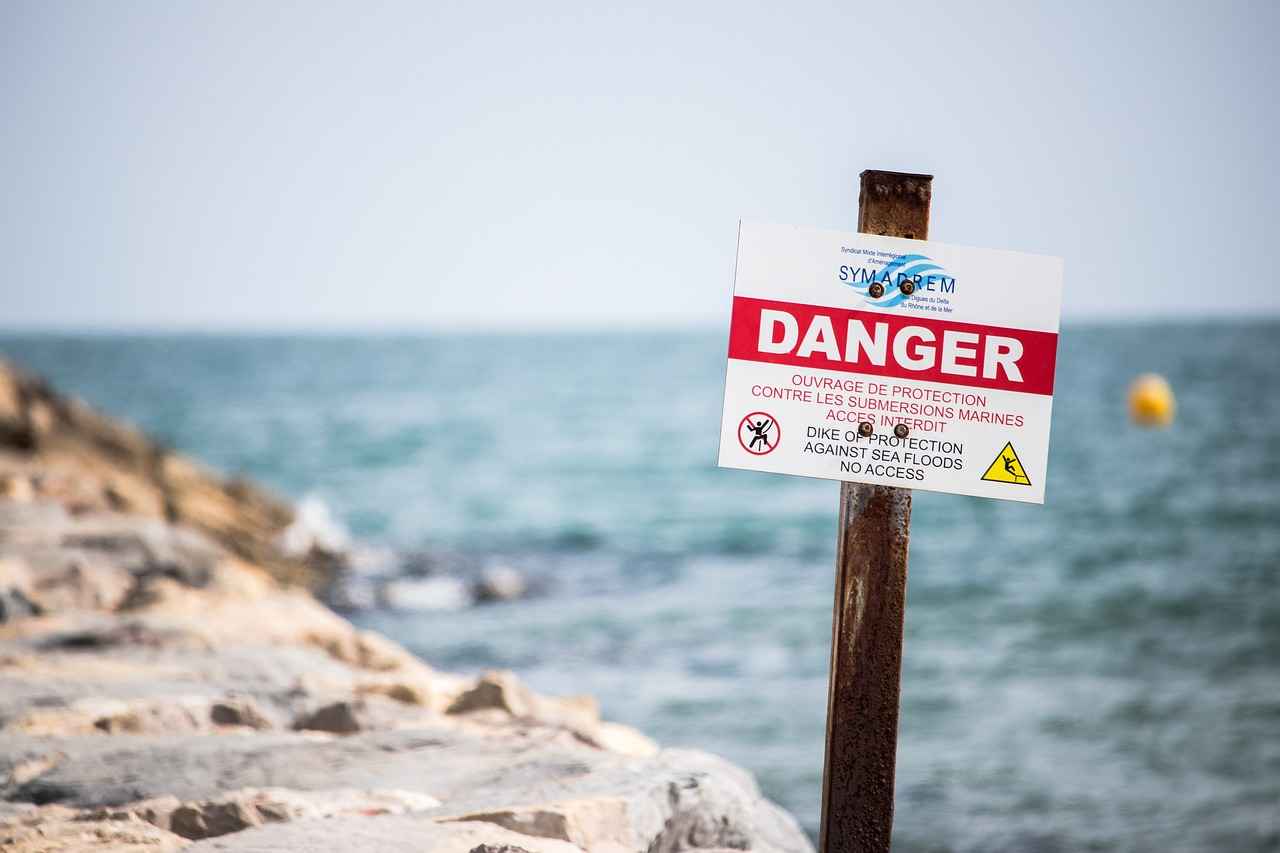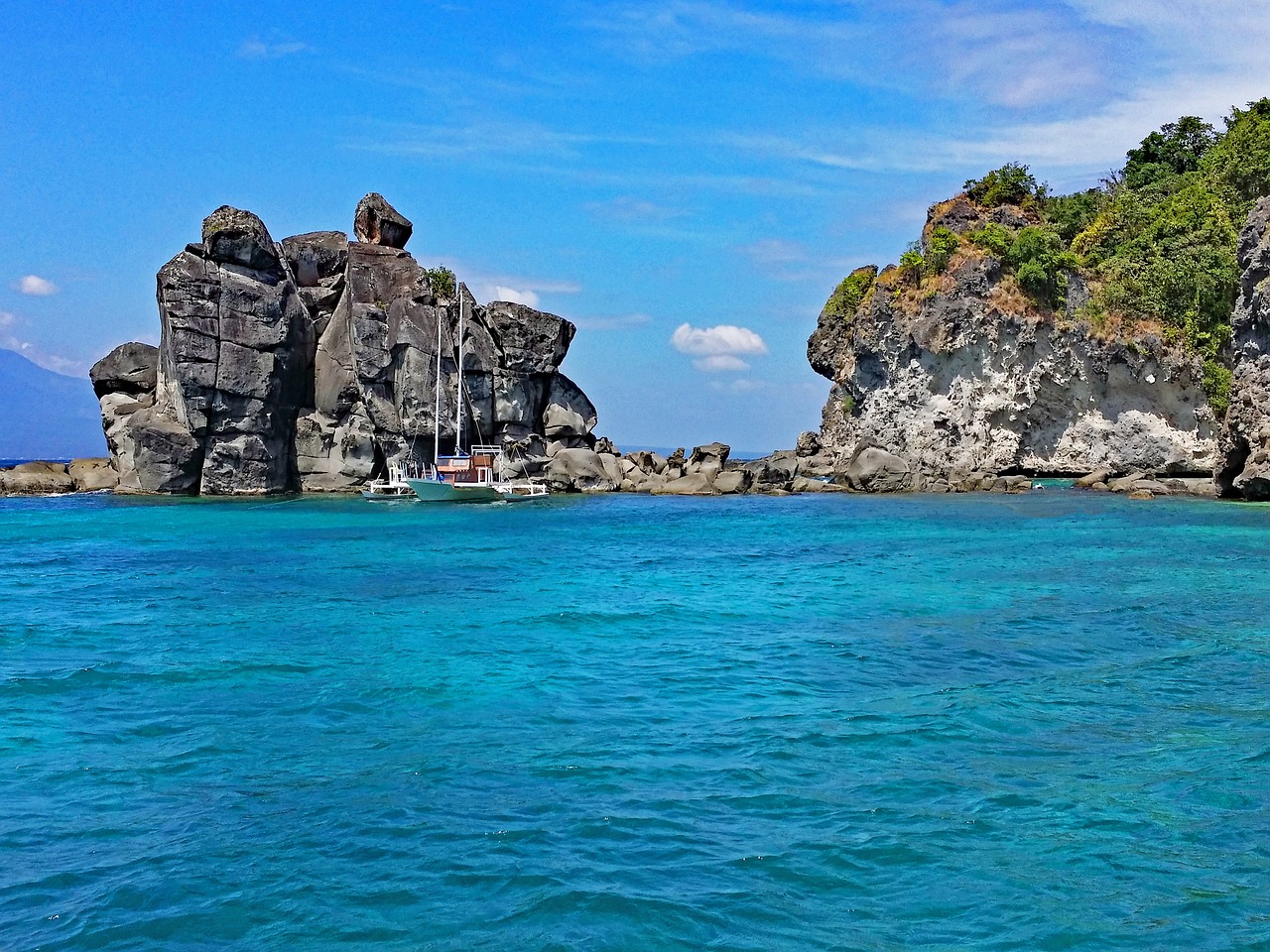Snorkeling is a fascinating activity that allows individuals to explore the underwater world while floating on the surface of the water. This article delves into the relationship between swimming skills and snorkeling, addressing common questions and providing comprehensive insights for both beginners and enthusiasts alike.
Snorkeling is a recreational water activity that involves using a snorkel, mask, and fins. These tools enable snorkelers to breathe while keeping their faces submerged, allowing for a clear view of marine life. The experience is often enhanced by the use of fins, which help with propulsion and maneuverability.
Many people ask, “Is swimming proficiency necessary for snorkeling?” While having basic swimming skills can enhance your safety and enjoyment, it is indeed possible to snorkel with limited swimming ability under certain conditions. Understanding your comfort level in the water is crucial.
Basic swimming skills, such as floating, treading water, and knowing a few basic strokes, can significantly improve your confidence while snorkeling. These skills allow you to maintain buoyancy and relax, making your underwater experience much more enjoyable.
Learning to float and tread water are essential techniques for any snorkeler. These skills help you conserve energy while observing the underwater world. Practicing these techniques in a controlled environment can boost your confidence.
Familiarity with basic swimming strokes like freestyle or backstroke can aid in maneuvering while snorkeling. This knowledge allows you to explore different areas with ease, making your snorkeling adventure more fulfilling.
If you are not confident in your swimming abilities, there are several alternatives to traditional snorkeling. Options such as snorkeling from a boat or using a flotation device can provide a safe yet enjoyable experience without requiring extensive swimming skills.
Safety should always be a priority when snorkeling, especially for those with limited swimming abilities. Implementing specific precautions can help ensure a safe and enjoyable experience.
Selecting appropriate snorkeling gear, such as a buoyancy vest or flotation device, can enhance safety for those who may struggle with swimming. These tools provide extra support and peace of mind.
Having a companion or professional guide can offer additional safety and support. This option is particularly beneficial for non-swimmers, as it allows you to enjoy the underwater experience without feeling overwhelmed.
Identifying suitable snorkeling locations is crucial for those who are not confident swimmers. Some areas offer calm waters and shallow reefs that are more accessible for beginners.
Look for snorkeling spots with shallow water and gentle waves, such as lagoons or protected bays. These environments provide a safer setting for novice snorkelers to explore.
Participating in guided snorkeling tours can be an excellent option for non-swimmers. These tours often provide safety equipment and professional guidance, ensuring a secure and enjoyable experience for everyone involved.

What Is Snorkeling and How Does It Work?
Snorkeling is an exhilarating water activity that offers a unique opportunity to explore the vibrant world beneath the waves. It allows individuals to observe underwater life while floating comfortably on the surface. This engaging experience typically requires a few essential pieces of equipment, including a snorkel, mask, and fins, each serving a specific purpose to enhance your adventure.
The snorkel is a curved tube that allows you to breathe while your face is submerged in water. Its design enables you to take in air without having to lift your head out of the water, providing a seamless experience as you glide through the aquatic environment. The mask creates an airtight seal around your eyes and nose, allowing for clear visibility underwater. It is crucial to choose a mask that fits well to avoid leaks and ensure comfort during your snorkeling session. Finally, fins are essential for propulsion, enabling you to swim efficiently and explore larger areas with ease.
When you enter the water, the combination of these tools allows you to float effortlessly while observing the rich marine ecosystem. You may encounter a variety of fish, coral reefs, and other fascinating marine life, making snorkeling a popular choice for both beginners and seasoned adventurers alike.
To make the most of your snorkeling experience, it is important to be aware of your surroundings and the specific conditions of the water. Factors such as water currents, visibility, and temperature can significantly impact your comfort and safety while snorkeling. Additionally, it is wise to familiarize yourself with the local marine life, as some species may be protected or pose potential hazards.
For those new to snorkeling, it is advisable to start in calm, shallow waters where you can practice your skills without feeling overwhelmed. Many popular snorkeling destinations offer guided tours, which can provide valuable insights and ensure a safer experience for beginners. These tours often include equipment rental, safety briefings, and expert guidance, allowing you to focus on enjoying the underwater wonders.
In conclusion, snorkeling is a fantastic way to connect with nature and witness the beauty of marine ecosystems up close. By understanding how snorkeling works and preparing adequately, you can enjoy a safe and memorable underwater adventure.

Do You Need Swimming Skills to Snorkel?
When it comes to snorkeling, a common question arises: This inquiry is particularly relevant for beginners who may feel apprehensive about venturing into the water. While having basic swimming skills can significantly enhance both safety and enjoyment, it is indeed possible to snorkel even with limited swimming ability. This article will delve into the intricacies of snorkeling and the role swimming proficiency plays.
Swimming skills can provide a solid foundation for snorkeling. Basic abilities such as floating, treading water, and executing simple strokes can help you navigate the water more comfortably. These skills not only boost your confidence but also allow you to relax and fully immerse yourself in the underwater experience.
Yes, you can snorkel without being a strong swimmer. Many snorkeling locations cater to individuals with varying levels of swimming proficiency. However, it’s essential to acknowledge that having some basic swimming skills can enhance your overall experience. If you can float and tread water, you will be able to enjoy snorkeling with greater ease.
- Floating: Learning to float helps you conserve energy while observing marine life.
- Treading Water: This skill allows you to maintain your position in the water without tiring quickly.
- Basic Strokes: Familiarity with strokes like freestyle can help you maneuver more effectively.
If you are not confident in your swimming abilities, there are several strategies you can employ to prepare for snorkeling:
- Take a Snorkeling Class: Consider enrolling in a class that focuses on snorkeling techniques and safety.
- Practice in a Controlled Environment: Start in a pool where you can practice floating and treading water in a safe setting.
- Use Flotation Devices: Wearing a buoyancy vest can provide added safety and comfort while snorkeling.
Safety should always be your top priority. Here are some tips to ensure a safe snorkeling experience:
- Snorkel with a Buddy: Always snorkel with a partner or guide who can assist you if needed.
- Choose Calm Waters: Look for locations with gentle waves and shallow reefs to minimize risks.
- Stay Close to the Shore: This allows for easy access to safety if you encounter difficulties.
Identifying suitable snorkeling spots is crucial for those lacking confidence in their swimming abilities. Here are some ideal locations:
- Shallow Lagoons: These areas typically have calm waters and are perfect for beginners.
- Protected Bays: These locations offer a safe environment with minimal wave action.
- Guided Tours: Participating in guided snorkeling tours can provide you with professional support and safety gear.
In conclusion, while swimming proficiency can enhance your snorkeling experience, it is not an absolute requirement. With the right preparation, safety measures, and suitable locations, even those with limited swimming skills can enjoy the wonders of snorkeling.
Understanding the Basics of Swimming for Snorkeling
When it comes to snorkeling, having a solid foundation in basic swimming skills can greatly enhance your experience underwater. While it’s possible to enjoy snorkeling with limited swimming abilities, understanding fundamental swimming techniques can boost your confidence and comfort level significantly. Below, we delve deeper into the essential swimming skills that can make your snorkeling adventures both safe and enjoyable.
Basic swimming skills encompass a variety of techniques that can aid in your snorkeling experience. These skills include:
- Floating: This skill allows you to remain on the surface of the water with minimal effort, conserving energy while you take in the sights below.
- Treading Water: Being able to tread water effectively gives you the ability to stay in one place, making it easier to observe marine life without the risk of drifting away.
- Basic Strokes: Familiarity with strokes such as freestyle or backstroke enhances your ability to navigate and explore different areas while snorkeling.
Learning to float and tread water are essential skills for any snorkeler. These techniques not only help maintain buoyancy but also allow you to relax while observing the underwater world. Here’s how to master these skills:
1. To float, lie on your back with your arms and legs spread out.2. Keep your head tilted back and breathe deeply to increase buoyancy.3. For treading water, use a combination of arm and leg movements to stay afloat.
By practicing these skills in a controlled environment, such as a swimming pool, you can build your confidence before venturing into open water.
Familiarity with basic swimming strokes can significantly improve your control while snorkeling. Here are some tips for practicing:
- Freestyle: This stroke helps you move quickly and efficiently through the water, allowing for easier exploration.
- Backstroke: This is a great option for relaxing while keeping your face out of the water, giving you a chance to enjoy the scenery above.
Practicing these strokes not only enhances your swimming ability but also increases your comfort level when wearing snorkeling gear.
If you’re not confident in your swimming abilities, there are still options for enjoying snorkeling. Consider the following:
- Snorkeling from the Shore: Choose locations where you can enter the water from the beach, minimizing the need for swimming.
- Using a Floatation Device: Devices such as life vests or noodles can provide additional support and security.
These alternatives allow you to experience the beauty of snorkeling without the pressure of mastering swimming skills.
Safety is paramount when snorkeling, especially for those with limited swimming skills. Here are some important safety tips:
- Always Snorkel with a Buddy: Having a companion can provide reassurance and assistance in case of difficulties.
- Choose Calm Waters: Look for snorkeling spots with gentle waves and shallow depths to ensure a safer experience.
By following these guidelines, you can enjoy snorkeling while feeling secure and confident in your abilities.
How to Float and Tread Water Effectively
When it comes to snorkeling, mastering the art of floating and treading water is crucial for a fulfilling experience. These skills not only enhance your enjoyment but also ensure your safety while exploring the vibrant underwater world. In this section, we will delve into effective techniques to help you float and tread water with confidence.
Floating and treading water are fundamental skills that allow snorkelers to maintain buoyancy effortlessly. By mastering these techniques, you can conserve energy and relax while observing marine life. This is particularly important as it allows you to immerse yourself in the beauty of the underwater environment without the risk of fatigue.
- Find the Right Position: Start by lying on your back in the water. Keep your body straight and relaxed, with your arms extended out to the sides and your legs slightly apart.
- Use Your Breathing: Inhale deeply and let your lungs fill with air. This will help you stay buoyant. Exhale slowly to maintain control.
- Stay Relaxed: Tension can cause you to sink. Focus on relaxing your muscles and letting the water support you.
Treading water is a technique that allows you to stay in one place while keeping your head above water. Here’s how to do it:
- Use Your Legs: Perform a scissor kick or a flutter kick with your legs. Keep them moving in a rhythmic motion to generate upward thrust.
- Arm Movements: Use your arms to help maintain balance. You can either paddle your arms in a circular motion or keep them at your sides, depending on what feels comfortable.
- Stay Calm: Like floating, staying calm is essential. Panic can lead to exhaustion. Focus on your breathing and movements.
To become proficient in these skills, practice is key. Here are some tips:
- Choose a Safe Environment: Start in a shallow pool or calm water where you feel secure.
- Practice Regularly: Consistent practice will build your confidence and improve your technique.
- Get Feedback: If possible, have a friend or instructor observe your technique and provide constructive feedback.
Having the ability to float and tread water offers numerous benefits for snorkelers:
- Increased Confidence: Knowing you can stay afloat boosts your confidence, allowing you to enjoy your snorkeling experience fully.
- Enhanced Safety: These skills can be lifesaving, especially in unexpected situations where you need to conserve energy.
- Greater Enjoyment: With the ability to relax and observe marine life without the fear of sinking, your snorkeling adventure becomes much more enjoyable.
In conclusion, learning to float and tread water effectively is essential for anyone looking to enjoy snorkeling. By mastering these skills, you can enhance your safety, increase your confidence, and fully immerse yourself in the beauty of the underwater world.
Practicing Basic Strokes for Better Control
When it comes to snorkeling, having a basic understanding of swimming strokes can significantly enhance your experience. Practicing basic strokes not only improves your comfort in the water but also allows for greater control and maneuverability while exploring underwater environments.
One of the most essential strokes to familiarize yourself with is the freestyle stroke. This stroke is characterized by its efficiency and speed, making it ideal for covering distances while snorkeling. By mastering the freestyle, you can easily glide through the water, allowing you to observe marine life without expending excessive energy. It involves a flutter kick and alternating arm movements, which can help you maintain a steady pace while snorkeling.
Another useful stroke is the backstroke. This stroke is particularly advantageous when you want to take a break from looking down at the underwater scenery. By floating on your back, you can relax and enjoy the sky while still keeping an eye on your surroundings. The backstroke promotes a sense of calmness, making it easier to manage your breathing and enjoy the experience without feeling overwhelmed.
Additionally, learning to tread water is a crucial skill for any snorkeler. This technique allows you to stay afloat in one spot while observing the marine life around you. Treading water involves using your arms and legs in a rhythmic motion to maintain buoyancy. This skill is particularly helpful in areas where you may need to pause and take in the beauty of your surroundings without worrying about drifting away.
For those who may feel apprehensive about swimming, practicing these strokes in a controlled environment, such as a swimming pool, can build confidence. Start by focusing on your breathing and body positioning. Gradually, as you become more comfortable, you can transition to open water where you can apply these skills while snorkeling.
Moreover, consider incorporating drills into your practice sessions. For instance, you can set goals for distance or time while swimming freestyle or backstroke. This not only enhances your physical stamina but also builds muscle memory, making your movements more instinctual when you are snorkeling.
In summary, being familiar with basic swimming strokes like freestyle and backstroke is invaluable for anyone looking to enhance their snorkeling experience. These strokes provide better control, allowing you to navigate the water with ease. The more comfortable you are in the water, the more you can focus on the incredible underwater landscapes that await you. So, take the time to practice these essential skills, and you will find that snorkeling becomes a more enjoyable and fulfilling adventure.
Alternatives for Non-Swimmers
For those who may feel apprehensive about swimming, there are numerous alternatives to traditional snorkeling that can still provide an enjoyable and fulfilling experience. These options allow individuals to explore the underwater world without the pressure of extensive swimming skills.
Non-swimmers can engage in various activities that offer a glimpse into the vibrant marine life without the need for advanced swimming techniques. Here are some effective alternatives:
- Shallow Water Snorkeling: This option allows you to explore underwater life in calm, shallow waters. You can simply float on the surface with minimal swimming required. Look for locations with a depth of around 3 to 5 feet, where you can easily stand if needed.
- Snorkeling from a Boat: Many tours offer snorkeling directly from a boat. Participants can wear life jackets or use flotation devices, allowing them to enjoy the experience without needing to swim far from the vessel.
- Using a Buoyancy Vest: A buoyancy vest provides additional support and stability, making it easier for non-swimmers to stay afloat while observing marine life. This gear can significantly enhance comfort and confidence in the water.
- Guided Snorkeling Tours: Joining a guided tour can be an excellent choice for those lacking swimming skills. Professional guides ensure safety and provide assistance, allowing participants to focus on enjoying the underwater scenery.
- Glass-Bottom Boat Tours: For those who prefer to stay dry, glass-bottom boat tours offer an incredible view of underwater life without the need to swim. This option is perfect for families or individuals who want to experience snorkeling without getting wet.
Even without strong swimming abilities, you can still enjoy snorkeling by following these practical tips:
- Stay Close to the Shore: When snorkeling, choose locations that are close to the shore. This allows for easier access and provides a safe environment where help is readily available if needed.
- Practice Breathing Techniques: Familiarize yourself with using a snorkel and mask before entering the water. Practice breathing through the snorkel while floating on your stomach in a controlled environment, such as a pool.
- Buddy System: Always snorkel with a buddy or a guide. This ensures that someone is there to assist you if you encounter difficulties, enhancing safety and enjoyment.
- Take Breaks: If you start to feel tired or overwhelmed, don’t hesitate to take breaks. Floating on your back or resting on a flotation device can help you recharge.
Opting for alternatives to traditional snorkeling can provide several benefits:
- Increased Safety: Non-swimmers can enjoy the underwater experience without the anxiety of deep water or rough currents.
- Greater Accessibility: Many alternatives are designed to accommodate individuals of all skill levels, making snorkeling accessible to a broader audience.
- Enhanced Comfort: With the right equipment and support, non-swimmers can feel more at ease in the water, allowing for a more enjoyable experience.
In conclusion, while traditional snorkeling may seem daunting for non-swimmers, there are numerous alternatives available. By utilizing shallow waters, buoyancy aids, and guided tours, anyone can experience the beauty of underwater life without needing extensive swimming skills.

Safety Tips for Snorkeling Without Strong Swimming Skills
When it comes to snorkeling, safety should always be a priority, particularly for individuals with limited swimming abilities. Understanding and implementing specific precautions can significantly enhance the snorkeling experience, making it both safe and enjoyable.
For those who are not confident in their swimming skills, the underwater world can seem daunting. However, with the right precautions, even non-swimmers can safely explore beautiful marine environments. Here are some essential safety tips to consider:
- Buoyancy Vests: Wearing a buoyancy vest can provide essential flotation support, allowing non-swimmers to feel secure while snorkeling. These vests help maintain buoyancy, making it easier to stay afloat.
- Snorkel Gear: Ensure that the mask fits properly and the snorkel is functioning correctly. A good seal on the mask is crucial to prevent water from entering.
- Fins: Using fins can enhance your ability to navigate through the water, allowing for easier movement and reduced fatigue.
One of the most effective ways to ensure safety while snorkeling is to snorkel with a buddy or a qualified guide. This practice not only provides companionship but also allows for immediate assistance in case of any difficulties. Here are some benefits:
- Immediate Support: A buddy can help if you feel overwhelmed or need assistance.
- Shared Equipment: Buddies can share safety equipment, such as flotation devices, enhancing overall safety.
- Guidance: A guide can offer valuable insights about the snorkeling location, helping you navigate safely.
Before entering the water, it is crucial to assess the snorkeling environment. Look for calm and shallow waters that are suitable for beginners. Here are some tips for identifying safe locations:
- Protected Bays: Snorkeling in bays that are shielded from strong waves can provide a safer experience.
- Shallow Reefs: Opt for areas where the water is shallow, allowing for easy access and visibility of marine life.
While advanced swimming skills are not necessary for snorkeling, having a basic understanding of water safety can greatly enhance your experience. Consider practicing:
- Floating: Learning how to float can help you relax while observing underwater life, conserving energy.
- Treading Water: This skill allows you to stay in one place without expending too much energy, making it easier to enjoy the scenery.
For those who are not strong swimmers, joining a guided snorkeling tour can be an excellent option. These tours often provide safety equipment and professional guidance, ensuring a secure and enjoyable experience. Benefits include:
- Expert Guidance: Guides are trained to assist non-swimmers, providing essential safety tips and support.
- Access to Safe Locations: Tours are typically organized in safe, beginner-friendly spots.
In summary, snorkeling can be a thrilling experience for individuals of all swimming abilities. By prioritizing safety through proper equipment, buddy systems, environmental awareness, and guided tours, non-swimmers can confidently explore the underwater world.
Choosing the Right Equipment for Safety
When it comes to snorkeling, the right equipment can make all the difference, especially for those who may not be confident swimmers. Choosing the right snorkeling gear is crucial for enhancing safety and ensuring a more enjoyable experience. Below, we explore various equipment options and their benefits.
Safety should always be a priority when engaging in water activities. The right equipment not only enhances your enjoyment but also reduces the risk of accidents. For those who struggle with swimming, specific gear can provide the necessary support to float comfortably and explore the underwater world.
- Buoyancy Vest: A buoyancy vest is designed to keep you afloat while snorkeling. It provides additional support, allowing you to relax in the water without the fear of sinking. This is particularly beneficial for those who may not be strong swimmers.
- Flotation Devices: Inflatable flotation devices, such as pool noodles or inflatable rings, can also be used to provide extra buoyancy. These devices can help you stay above water while you enjoy the sights below.
- Snorkeling Mask with a Snorkel: A good-quality mask and snorkel are essential for clear visibility underwater. Ensure that the mask fits well to prevent leaks, which can be distracting and uncomfortable.
- Fins: Fins help with propulsion and can make it easier to maneuver in the water. They allow you to swim with less effort, which is particularly useful for those who may tire quickly.
When selecting a buoyancy vest, consider the following:
- Fit: The vest should fit snugly but not be too tight. It should allow for comfortable movement while providing sufficient buoyancy.
- Material: Look for vests made from durable, lightweight materials that are comfortable to wear for extended periods.
- Adjustability: Choose a vest with adjustable straps to ensure a secure fit for different body types.
In addition to choosing the right equipment, consider the following safety measures:
- Always Snorkel with a Buddy: Having a partner can provide additional safety and support. Make sure to communicate and keep an eye on each other while in the water.
- Stay in Designated Areas: Stick to areas that are marked for snorkeling, as these locations are typically safer and monitored.
- Know Your Limits: If at any point you feel uncomfortable or tired, it’s essential to exit the water and rest. Always listen to your body.
For those who are particularly anxious about snorkeling, consider joining a guided tour. Many tours cater specifically to beginners and non-swimmers, providing:
- Professional Instructors: Trained guides can help you navigate the waters safely and offer tips for a better experience.
- Safety Equipment: Guided tours often include safety gear, such as flotation devices and buoyancy vests, ensuring that you have the necessary support.
In summary, selecting the appropriate snorkeling gear, such as a buoyancy vest or flotation device, can significantly enhance safety for those who may struggle with swimming while snorkeling. By prioritizing the right equipment and following safety guidelines, you can enjoy the beauty of the underwater world with confidence.
Snorkeling with a Buddy or Guide
When it comes to snorkeling, having a companion or a professional guide can significantly enhance your experience, especially for those who may not be confident swimmers. This article delves into the importance of snorkeling with a buddy or guide, highlighting the safety and support they can provide.
Snorkeling can be a thrilling adventure, but it also comes with its own set of challenges. For individuals who are not strong swimmers, the thought of venturing into open water can be daunting. By snorkeling with a buddy or a professional guide, you can enjoy the underwater world with an added layer of security.
- Immediate Assistance: In case of any unforeseen circumstances, having a buddy ensures that help is readily available. Whether it’s a sudden wave or an equipment issue, your partner can assist you promptly.
- Shared Knowledge: A knowledgeable guide can provide valuable insights about the marine environment, helping you navigate safely while also enriching your experience with interesting facts about the underwater life.
- Increased Confidence: For non-swimmers, being with someone who is experienced can boost your confidence, making it easier to relax and enjoy the experience.
Engaging a professional guide can take your snorkeling adventure to the next level. Here are some of the benefits:
- Expert Navigation: Guides know the safest routes and best spots for snorkeling, helping you avoid areas that may pose risks to inexperienced snorkelers.
- Safety Equipment: Many guided tours provide essential safety gear, such as flotation devices and life vests, which can be particularly beneficial for those who are not strong swimmers.
- Structured Experience: Professional guides often organize the snorkeling experience, allowing you to focus on enjoying the beauty of the underwater world without worrying about logistics.
For many, the thought of snorkeling can trigger feelings of anxiety or overwhelm, particularly for those who lack swimming skills. Having a buddy or guide can alleviate these concerns:
- Supportive Environment: Snorkeling with someone who understands your apprehensions can create a more relaxed environment, allowing you to acclimate to the water at your own pace.
- Encouragement: A supportive companion can motivate you to explore and try new things, such as diving deeper or swimming farther, which can enhance your overall experience.
Choosing the right person to snorkel with is crucial for a positive experience. Consider the following:
- Experience Level: Ensure that your buddy or guide has sufficient snorkeling experience and knowledge of the area you plan to explore.
- Communication: Choose someone who is easy to communicate with, as clear communication is vital for safety and enjoyment.
- Comfort Level: It’s important that both you and your buddy feel comfortable in the water. This shared comfort can lead to a more enjoyable experience.
In summary, snorkeling with a buddy or a professional guide not only enhances safety but also enriches the overall experience. Their presence can alleviate anxiety, provide valuable insights, and ensure that you have a memorable adventure exploring the underwater world. Whether you are a novice or a seasoned snorkeler, having support can make all the difference in creating a safe and enjoyable experience.

Where to Snorkel If You’re Not a Strong Swimmer?
For those who are not confident swimmers, finding the right snorkeling locations is essential for an enjoyable experience. Identifying suitable spots can significantly enhance your safety and comfort while exploring the underwater world. Here are some key considerations and recommendations for snorkeling if you’re not a strong swimmer.
When searching for beginner-friendly snorkeling spots, look for areas that feature calm waters and shallow reefs. These environments allow novice snorkelers to feel more secure and less intimidated. Here are some characteristics to consider:
- Shallow Depths: Locations with depths of 3 to 5 feet are ideal, as they provide easy access to marine life without the risk of deep water.
- Protected Areas: Look for lagoons or bays that are shielded from strong currents and waves, creating a serene atmosphere for exploration.
- Clear Visibility: Choose spots where the water is clear, as this enhances your ability to see underwater life without needing to dive deep.
Here are some popular snorkeling destinations known for their suitability for less experienced snorkelers:
| Location | Features | Accessibility |
|---|---|---|
| Hanauma Bay, Hawaii | Shallow coral reefs, calm waters | Easy access with lifeguards on duty |
| Key Largo, Florida | Protected coral reefs, clear visibility | Guided tours available |
| Great Barrier Reef, Australia | Shallow sections, diverse marine life | Boat tours cater to beginners |
Participating in guided snorkeling tours is an excellent choice for those lacking swimming confidence. Professional guides are trained to ensure safety while providing assistance. These tours often include:
- Safety Equipment: Many tours provide buoyancy vests and flotation devices, enhancing security for non-swimmers.
- Instruction: Guides typically offer brief tutorials on snorkeling techniques, helping you feel more comfortable.
- Group Support: Snorkeling in a group can alleviate anxiety, as you have fellow participants and guides nearby.
While enjoying your snorkeling adventure, keep these safety tips in mind:
- Stay Close to Shore: Always remain within a safe distance from the shoreline to avoid getting lost or overwhelmed.
- Buddy System: Snorkel with a partner to ensure mutual safety and support.
- Know Your Limits: If you feel uncomfortable, don’t hesitate to return to shore or take a break.
By choosing the right locations and utilizing available resources, even those who are not strong swimmers can enjoy the wonders of snorkeling. Remember to prioritize safety and seek guidance when needed to make the most of your underwater adventures.
Shallow and Calm Waters for Beginners
For those new to snorkeling, finding the right environment is essential to ensure a positive and safe experience. One of the best ways to enjoy this underwater adventure is by seeking out shallow and calm waters. These locations not only provide a more manageable setting for novice snorkelers but also allow for a more enjoyable exploration of marine life.
Shallow waters are ideal for beginners for several reasons:
- Safety: In shallow waters, the risk of strong currents and deep-water hazards is significantly reduced. This makes it easier for novice snorkelers to feel secure while they learn the basics.
- Visibility: Shallow areas often have clear waters, making it easier to see the vibrant marine life that inhabits these ecosystems.
- Comfort: Being in shallow water allows snorkelers to stand up if they feel overwhelmed or need a break, which can be reassuring for those who are not confident swimmers.
When searching for the perfect snorkeling spot, consider protected bays or lagoon areas. These environments typically feature:
- Gentle Waves: The absence of strong waves makes it easier to float and observe the underwater scenery without the stress of battling the surf.
- Stable Conditions: Protected bays often have less wind and wave action, providing a tranquil experience for snorkelers.
Here are some popular locations known for their shallow and calm waters:
- Hanauma Bay, Hawaii: This marine embayment is famous for its clear waters and abundant marine life, making it a perfect spot for beginners.
- Key Largo, Florida: With numerous shallow reefs, Key Largo offers an ideal setting for novice snorkelers to explore.
- Great Barrier Reef, Australia: Certain areas of this world-renowned reef have shallow sections that are accessible and safe for those new to snorkeling.
To make the most of your snorkeling adventure in shallow and calm waters, keep the following tips in mind:
- Use Proper Equipment: Ensure you have a comfortable mask, snorkel, and fins. Consider a buoyancy vest for added safety.
- Stay Close to Shore: Always remain within a safe distance from the shoreline to avoid getting lost or caught in currents.
- Observe Marine Life Responsibly: Maintain a respectful distance from all marine creatures and avoid touching or disturbing them.
By choosing the right location and taking necessary precautions, beginners can enjoy the wonders of snorkeling without feeling overwhelmed. Embrace the beauty of the underwater world in a safe and supportive environment, and let the adventure begin!
Guided Tours for Non-Swimmers
When it comes to snorkeling, many people often wonder if they need to be proficient swimmers to enjoy this captivating underwater activity. For those who may not feel confident in their swimming abilities, guided snorkeling tours can provide an excellent solution. These tours are designed to cater to individuals of all skill levels, ensuring a safe and enjoyable experience.
Guided snorkeling tours are specifically tailored for individuals who may not have extensive swimming skills. Here are some key reasons why these tours are an ideal choice for non-swimmers:
- Professional Guidance: Participants are accompanied by experienced guides who are well-versed in snorkeling techniques and safety protocols. This professional oversight allows non-swimmers to feel secure as they explore the underwater world.
- Safety Equipment: Most guided tours provide essential safety equipment, such as life vests and flotation devices, which help enhance buoyancy and support for those who may struggle in the water.
- Structured Environment: Guided tours operate in controlled environments, often in shallow waters and calm conditions. This setting is perfect for beginners and non-swimmers, minimizing the risks commonly associated with snorkeling.
Participating in a guided snorkeling tour can be a thrilling adventure. Here’s what you can typically expect:
- Pre-Tour Briefing: Before entering the water, guides usually conduct a thorough briefing, explaining safety measures, snorkeling techniques, and what to expect during the tour.
- Personalized Attention: Guides often keep group sizes small, allowing for personalized attention. This ensures that non-swimmers receive the support they need to feel comfortable and confident.
- Marine Life Education: Many guides are knowledgeable about the local marine ecosystem and will share fascinating insights about the underwater life you may encounter, enriching your snorkeling experience.
Even for those who cannot swim well, snorkeling offers numerous benefits:
- Connection with Nature: Snorkeling allows individuals to connect with the beauty of marine life, fostering a sense of wonder and appreciation for the underwater environment.
- Physical Activity: While snorkeling, you engage in low-impact physical activity, which can be beneficial for overall health without the need for extensive swimming skills.
- Stress Relief: Being in the water and observing marine life can be incredibly relaxing, providing a mental escape from daily stressors.
To make the most of your guided snorkeling experience, consider the following tips:
- Wear Appropriate Gear: Ensure you have the right snorkeling gear, including a mask, snorkel, and fins. Most tours provide this equipment, but bringing your own can enhance comfort.
- Stay Hydrated: Drink plenty of water before your tour to stay hydrated, especially if you’re spending a significant amount of time in the sun.
- Communicate Your Needs: Don’t hesitate to communicate with your guide about your swimming abilities and any concerns you may have. They are there to help you have a safe and enjoyable experience.
In conclusion, guided snorkeling tours represent a fantastic opportunity for non-swimmers to explore the underwater world safely and enjoyably. With professional guidance, safety equipment, and a supportive environment, anyone can experience the wonders of snorkeling, regardless of their swimming skills.
Frequently Asked Questions
- Do I need to know how to swim to snorkel?
No, you don’t need to be a strong swimmer to snorkel, but having basic swimming skills can enhance your safety and enjoyment. It’s all about feeling comfortable in the water!
- What basic swimming skills should I have for snorkeling?
Familiarity with floating, treading water, and basic strokes can significantly boost your confidence while snorkeling. These skills help you stay relaxed and in control.
- Are there alternatives for non-swimmers?
Absolutely! Non-swimmers can opt for guided snorkeling tours or use flotation devices to enjoy the underwater world without needing extensive swimming skills.
- What safety tips should I follow as a beginner?
Always snorkel with a buddy, choose calm and shallow waters, and consider using a buoyancy vest. These precautions can make your experience much safer and more enjoyable!
- Where can I find beginner-friendly snorkeling spots?
Look for lagoons or protected bays with gentle waves and shallow waters. These locations are perfect for beginners and provide a safe environment to explore.




